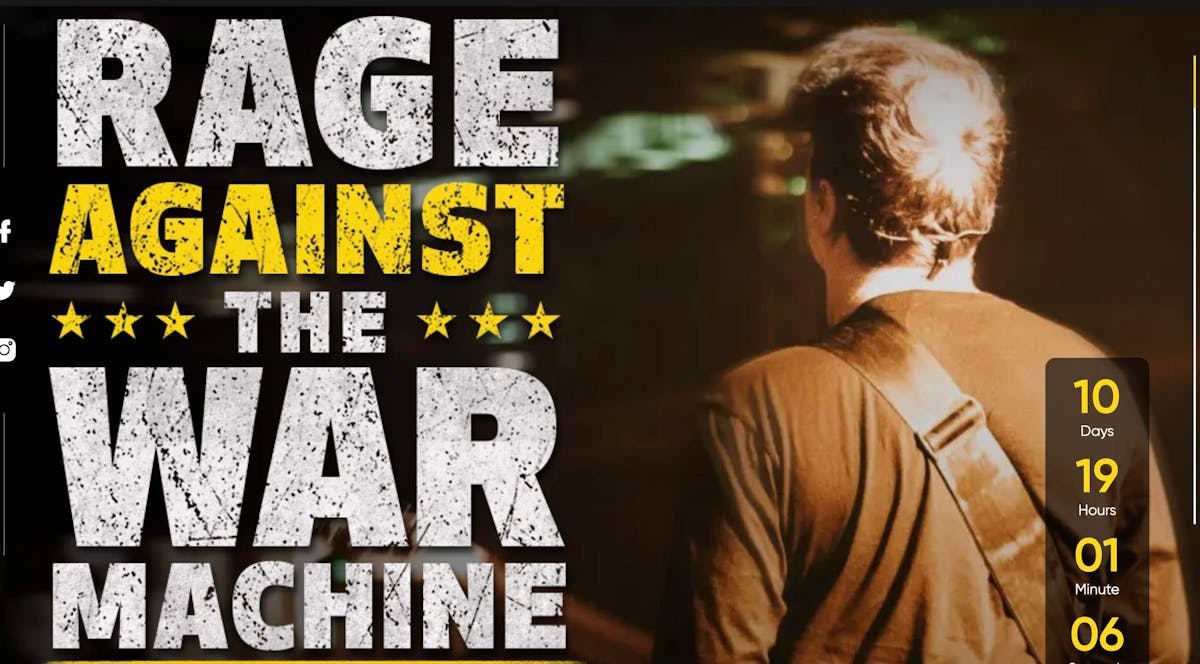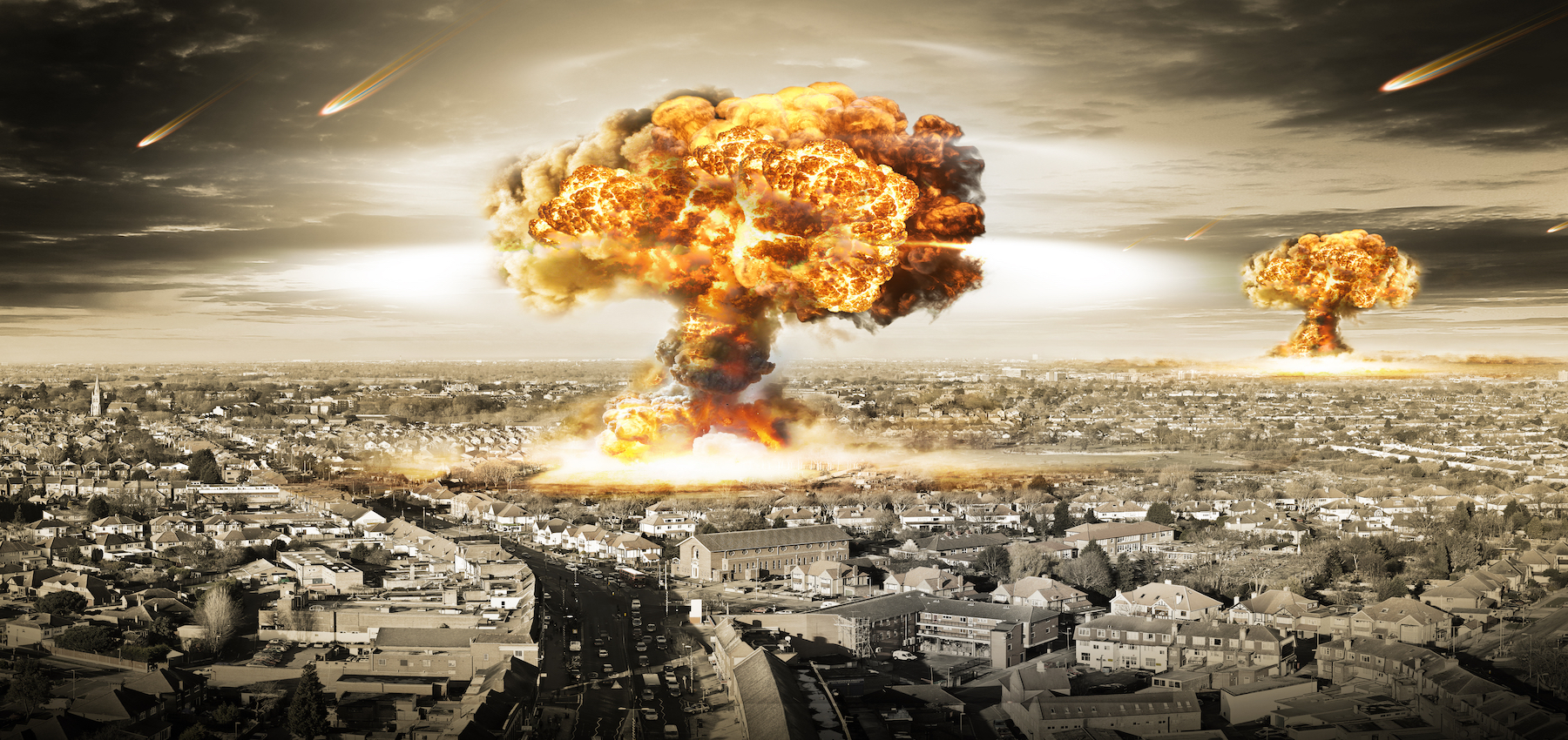
My Speech for the
Rage Against the War Machine Rally on Feruary 19
William J. Astore / Bracing Views & Antiwar.com
(February 17, 2023) — February 19th is the Rage Against the War Machine rally in DC. It just so happens to be my dad’s birthday as well. He was born on that date in 1917, endured the Great Depression, worked in the Civilian Conservation Corps and in factories until being drafted in 1942, and after the war became a firefighter, serving for more than thirty years until retiring. With my dad in mind, here’s the speech I’d give if I was invited on the stage. (The rally already has 27 speakers, but hopefully I can add a bit of rage and inspiration of my own.)

Hello everyone. Today would have been my dad’s 106th birthday. Happy Birthday, Dad!
In the late 1930s, when my dad was working hard for low pay in a factory, he tried to enlist in the U.S. Navy. The Navy recruiter rejected him because he was roughly a half inch too short.
After Pearl Harbor, and remembering his rejection, my dad didn’t join the eager volunteers. He waited to be drafted and reported to the Army. He served in an armored headquarters group but never went overseas to fight. That fact, and his earlier rejection by the Navy, is perhaps why I’m alive today to add my voice of rage against the military-industrial complex and America’s permanent state of undeclared war.
Dad and Mom raised me during the Cold War. I was conceived around the time of the Cuban Missile Crisis and was in diapers when John F. Kennedy was shot and killed in Dallas. As a boy, I embraced military things, played with toy soldiers, GI Joes, imitation M-16s, and similar toys of war. I built model tanks, model warplanes, model warships. I blew them up with firecrackers, imagining heroic battles.
As a teenager in the 1970s, I believed the Soviet Union was an insidious threat to American democracy. We faced the prospect of nuclear destruction. My dad was philosophical about this. Even if Americans and Russians killed each other in mutual assured destruction, known appropriately as MAD, a billion Chinese would survive to kickstart humanity, he quipped.
But there were two harsh realities my dad and I didn’t know back then. Nuclear winter was one. Any major exchange between nuclear powers, we now know, wouldn’t just kill the people in those countries.

The soot and ash thrown into the atmosphere from thermonuclear war would likely lead to mass starvation globally. (Let’s not forget global radioactivity, sickness, and death as well.) The second one was that America’s nuclear plans, known as the SIOPs, envisioned not just massive attacks on the USSR but China as well, even if China hadn’t attacked the United States.
Sorry, Dad: In case of a major nuclear war, China’s goose was cooked, as was most other forms of life on our planet.
When I graduated from college in 1985, a brand-new 2nd lieutenant in the US Air Force, my first assignment took me to Colorado Springs and Cheyenne Mountain, America’s very own Mount Doomsday. Cheyenne Mountain was America’s nuclear command and control center, literally blasted and tunneled out of a mountain, protected by 2000 feet of solid granite above it.
Giant blast doors and buildings mounted on immense springs theoretically enabled us to ride out a nuclear war. But we few under the mountain knew that if DEFCON 1 came to pass, we’d likely be among the first to die in a nuclear war, even with all that rock over our heads.
You might say I’ve been to the mountain, Cheyenne Mountain, that is, both inside and outside. I much preferred the outside, hiking in the cool crisp Colorado air.
Once, when I was inside the mountain, the “battle staff” ran a wargame that ended with a nuclear attack on US cities. In a sense, then, I’ve seen the missiles fly, I’ve seen their tracks end at American cities, if only on a monochrome monitor. Even that low-tech video screen convinced me that I never, ever, want to see the real thing.
A few years later, I walked the desert wilderness of Alamogordo, New Mexico, site of the first atomic blast in July of 1945, the Trinity test that preceded Hiroshima and Nagasaki. I’ve seen what little remained from that test, a test that changed everything, after which the survival of humanity as a species became problematic, precarious, and uncertain, dependent on men and their control over their thermonuclear toys, the playthings of the demented.

I’ve been to doomsday mountain, I’ve walked in an atomic wilderness, and I’ve come here to say: enough is enough.
The Pentagon plans to spend as much as $2 trillion over the next 30 years on a refreshed nuclear triad. Sentinel ICBMs. B-21 stealth bombers. Columbia-class nuclear subs. When will the insanity end?
As the doomsday clock ticks ever closer to midnight, we must act to stop it, to turn it back. We must act so that it never has the remotest chance of striking midnight.
We must walk – better yet, run – out of the dark and dank tunnel of doomsday mountain into the glorious light awaiting us. We must relish the wondrous sights and sounds of life. We must embrace each other, share the warmth of our common humanity as we seek a better, peaceful future for everyone everywhere.
Because mountains won’t protect us. Missiles won’t save us. Weapons won’t warm us, unless by warmth you mean death by nuclear fire.
Ending war will protect us. Ending missiles will save us. Compassion, tolerance, and love will warm us.
I know because I’ve been to doomsday mountain. I’ve witnessed nuclear war, if only during an exercise. I’ve walked in a desert where an atomic blast obliterated and irradiated most everything in its path. And that’s not a future I want. That’s not a future any sane person wants. That way lies madness.

Come, take my hand. Join me in leaving Cheyenne Mountain. Let’s run like children, with joy, away from tunnels and blast doors, toward the light of peace.
And, once we’re out, let’s put the darkness of war and nuclear terror behind us and never look back.
Thank you.
William J. Astore is a retired lieutenant colonel (USAF). He taught history for fifteen years at military and civilian schools. He writes at Bracing Views.
Posted in accordance with Title 17, Section 107, US Code, for noncommercial, educational purposes.